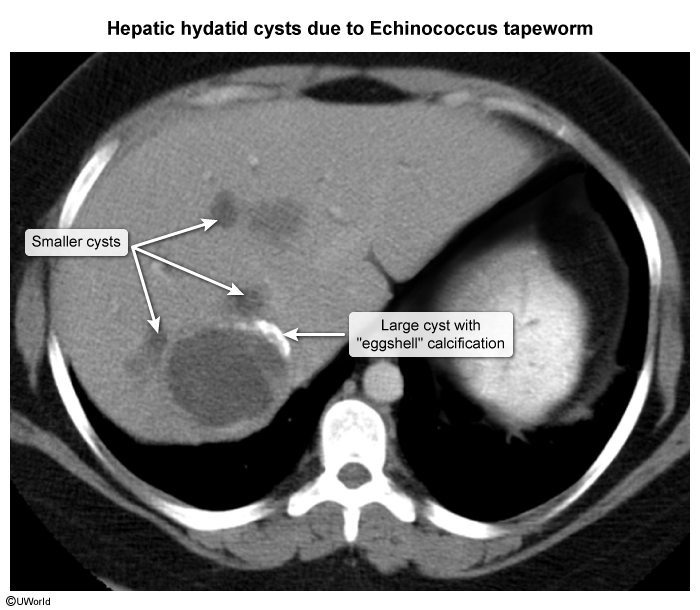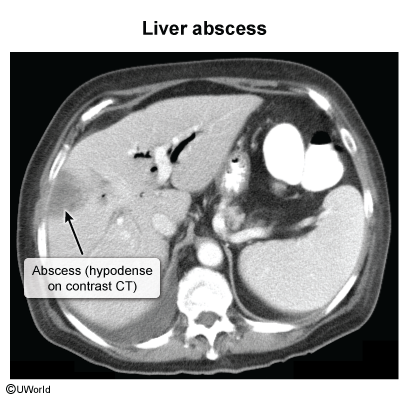Pyogenic Liver Abscess
Article Sections
Introduction
Liver abscesses are the most common type of intraabdominal abscess. In resource-limited settings, they have a relatively high incidence and are usually caused by parasitic infections (eg, Entamoeba histolytica, Echinococcus). In contrast, in resource-abundant settings, liver abscesses are uncommon and are most often caused by bacterial infection; these pyogenic liver abscesses are the focus of this article.
Pathophysiology and microbiology
Pyogenic liver abscess can result from direct spread from the biliary tract or surrounding structures, or hematogenous spread through the portal vein or systemic circulation. Most abscesses are polymicrobial, with enteric gram-negative bacilli, streptococci (eg, Streptococcus milleri, typically associated with infection at other sites), and certain gram-positive organisms (eg, Staphylococcus aureus) being the most common pathogens. In East Asia (eg, Thailand),
Continue Learning with UWorld
Get the full Pyogenic Liver Abscess article plus rich visuals, real-world cases, and in-depth insights from medical experts, all available through the UWorld Medical Library.
Figures

Images
